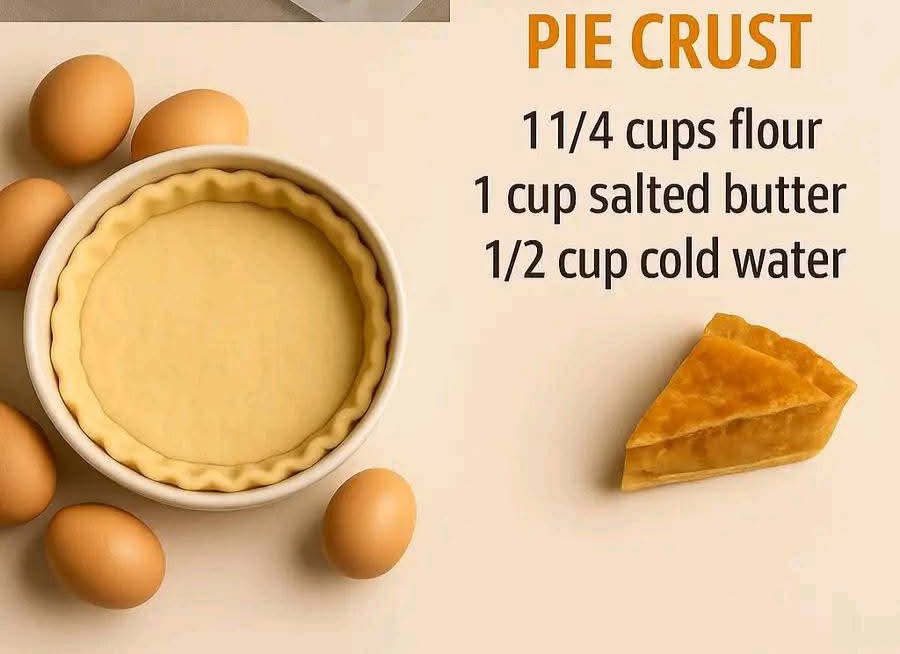Homemade Pie Crust: Flaky, Buttery Perfection
There’s nothing quite like a homemade pie crust—tender, flaky, and rich with buttery flavor. This recipe is a game-changer, whether you’re baking a sweet fruit pie or a savory quiche. Unlike fussy laminated doughs, this crust comes together quickly with minimal effort. Just mix, chill, and roll for a sturdy yet delicate result that holds its shape beautifully.
The secret lies in keeping the butter cold and handling the dough just enough to bring it together. No special skills or equipment are needed, making it perfect for beginners and seasoned bakers alike. Plus, the versatility of this crust means it adapts to any filling, from tangy lemon curd to hearty chicken pot pie. Once you try this recipe, you’ll never go back to store-bought!
Ingredients
- 2 ½ cups all-purpose flour
- 1 cup salted butter (cold, cubed)
- ½ cup ice-cold water
- Optional: 1 tsp sugar for sweet pies
Instructions
In a large bowl, combine the flour and sugar (if using). Add the cold cubed butter and use a pastry cutter or your fingers to work it into the flour until the mixture resembles coarse crumbs with pea-sized butter pieces.
Gradually drizzle in the ice water, mixing just until the dough comes together.
Divide into two disks, wrap in plastic, and chill for at least 30 minutes. Roll out on a floured surface to fit your pie dish, then proceed with your recipe.
Variations
For a richer crust, substitute ¼ cup of the water with vodka or vinegar, which inhibits gluten formation for extra tenderness. If you prefer an all-butter flavor but want add
ed crispness, replace 2 tablespoons of butter with shortening. For a nutty twist, swap ½ cup of flour with finely ground almonds or pecans—ideal for autumn pies.
Herb-infused crusts are fantastic for savory dishes: try adding 1 tablespoon of fresh thyme or rosemary to the flour mixture.
For a sweet, spiced version, mix in ½ teaspoon of cinnamon or cardamom. If you’re gluten-free, use a 1:1 gluten-free flour blend and add ½ teaspoon xanthan gum for structure.
Tips
Keep everything cold—warm butter leads to a tough crust. If the dough feels sticky when rolling, chill it for 10 minutes before continuing.
For even baking, prick the bottom with a fork if pre-baking (blind baking) and use pie weights or dried beans to prevent puffing.
Don’t overwork the dough; visible butter flecks are key for flakiness. If the edges brown too quickly during baking, cover them with foil.
For a glossy finish, brush the crust with an egg wash (1 egg + 1 tbsp water) before baking.
How to Store
Wrap unbaked dough disks tightly in plastic and refrigerate for up to 3 days or freeze for 3 months.
Thaw frozen dough overnight in the fridge before rolling.
Pre-baked crusts can be stored at room temperature for 2 days or frozen for up to a month.
Conclusion
This homemade pie crust is a foolproof foundation for endless creations—simple enough for weeknight dinners yet impressive for special occasions. Its versatility and reliability make it a staple in any baker’s repertoire. Once you master this recipe, you’ll cherish the compliments and requests for seconds.
Whether you’re crafting a double-crust apple pie or a rustic galette, this dough delivers consistent results. Embrace the joy of baking from scratch, and let this buttery, flaky crust elevate every pie you make. Happy baking!
